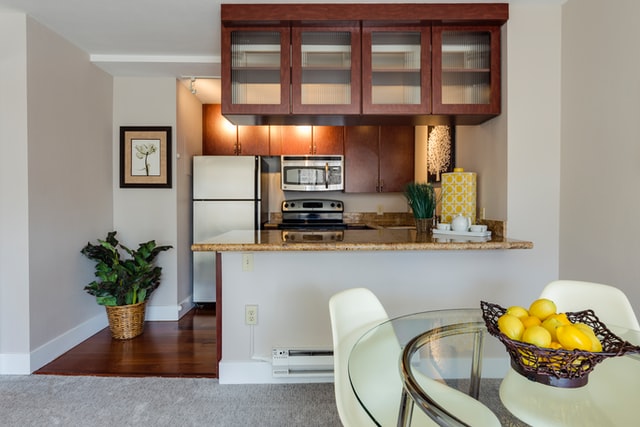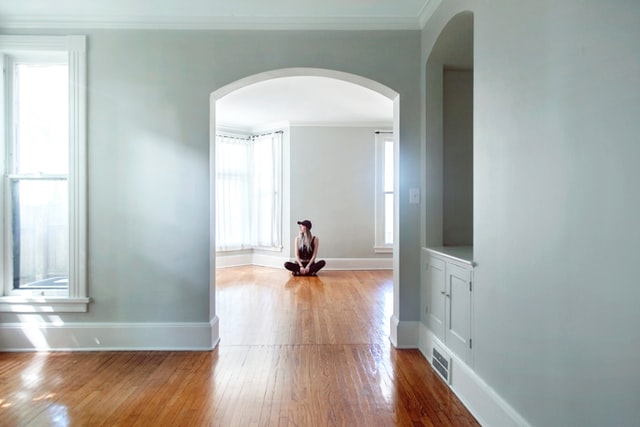Rental homes can be furnished or unfurnished depending on what your target renters need. Most families already have furnishings and appliances so furnished units can mean doubling the items in their home. They tend to prefer unfurnished units to avoid dealing with this situation.
On the other hand, students or those entering the workforce for the first time may need to rent homes with a complete setup where they can move in right away.
To determine which one fits your goal, check out the pros and cons of having a furnished or unfurnished rental space.
Furnished Rentals
A furnished rental is a ready-to-rent home where tenants don’t need to shop for furniture and already have the necessary appliances installed in the space.
Here are some pros to offering furnished units:
You can collect higher rent
Since tenants can move in right away and don’t have to purchase furniture, the rent generally comes at a premium price. Renters don’t have to spend a lot in terms of important home appliances and furniture. The money they save in this respect can go towards higher rent prices.

It's easier to land renters
Generally, there’s a wider pool of prospects for furnished units. This setup can attract tourists, students, young professionals, and those who prefer to move in conveniently. They can just pack a bag and settle down easily without lugging heavy furniture or purchasing additional appliances.
You can save time and money
Moving can be expensive if you have to hire a truck to transfer your furniture. Buying basic appliances can also become costly. In a furnished unit, you can save time looking for the perfect bed, dining table, or refrigerator since they’ll be provided for you. You also reduce the stress of organizing and paying for someone to move and carry them.
All the tenants have to move in are their items and decor meaning they can settle into the space faster.
Tenants are more careful with furnishings
When your rental home already has furnishings, renters tend to take better care of them. One reason is they want to receive their security deposit fully intact. Second is they appreciate the ready-to-use furniture and will strive to maintain them.
Short-term rentals allow for more flexibility
Furnished units commonly attract short-term renters. This earns you flexibility whether you want to increase the rent and change your rental property’s policies.
These are some of the cons of having a furnished unit:
Tenants can find the rent costly
The rent rate limits your tenant pool. If a renter is rent price-sensitive, then they can opt for an unfurnished unit as they tend to be more affordable.

Higher turnover scenario
Most renters attracted to furnished units tend to stay for a shorter duration. Some of them have permanent residences that are being renovated so they’re renting temporarily. Having furnished units means you’ll be required to conduct ongoing marketing.
Greater potential of damage
Considering the high turnover of furnished units, your property’s furnishings can run the risk of more damage. This is a likely case since your rental housed a ton of renters. Wear and tear can be fast-tracked in this situation.
Unfurnished rentals
Unfinished rentals are empty rental spaces where tenants need to spend money on furnishings and appliances to decorate the unit.
These are some of the pros of unfurnished units:
Better chance of scoring long-term tenants
Tenants are likely to stay in one place longer. This is because tenants who have their own furnishings can find it exhausting and expensive to move their possessions around. What’s more, when tenants decorate the rental, it strengthens the feeling of home. This leads to attachment and the desire to stay longer in a home it has become their sanctuary.
Zero worries on the state of the furnishings
Not owning the furnishings equates to focusing on the property itself. Your responsibility is limited to the property instead of continually inspecting the state of your furniture.
Less hands-on management required
You can leave the maintenance of furnishings to the renters. You can then focus on essential items such as HVAC systems and the exterior and interior parts of the rental.

Fewer incidents of theft
You don’t have to worry about stolen furnishings in your rental unit compared to having your possessions around the rental unit.
Limited insurance payment
Insurance premiums generally cost less for unfurnished units. You don’t have to add furnishings as items to insure in your policy.
There are cons associated with unfurnished units, like:
Less flexibility with long-term renters
Since unfurnished units attract long-term renters, it can be hard to adopt new policies or raise the rent. As a landlord, you must honor the contract and wait for the rental term to expire before you can add any changes.
Longer waiting periods
It might take a while to find renters since the market often favors furnished units. Bear in mind that long-term tenancy produces stable returns for your rental business. Just keep marketing to your potential target market and in time, a response will arrive inquiring about a vacant unfurnished unit.
Bottom line
Your decision to keep your rental furnished or not is contingent upon the needs of your chosen tenant demographics. That’s why it’s best to figure out who you’re marketing to. This way, you can come up with the right decision.
If you need help managing your property, hire the services of a qualified property management company like Lone Eagle Management!